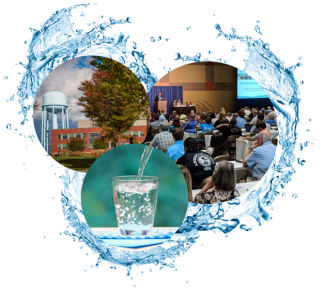20th Annual EPA Drinking Water Workshop: Session 7A

Lead and Copper
Track A: Distribution Systems and Water Quality
Presentation summaries and speaker and moderator biographies for Session 7A of the 20th Annual EPA Drinking Water Workshop.
September 13, 2023 from 1:45 to 3:30 p.m. ET
See the full workshop agenda for all sessions.
Moderator:
Darren A. Lytle, Ph.D., P.E. | EPA Office of Research and Development
Darren is an environmental engineer with EPA's Office of Research and Development, Center for Environmental Solutions and Emergency Response in Cincinnati, Ohio. Since beginning work at EPA in 1991, his primary goal has been to research the quality of drinking water. Over the years, he has investigated and published works on drinking water systems, including work on distribution system corrosion control and water quality (e.g., red water control, lead and copper corrosion control); filtration (emphasis on removal of particles, and microbial contaminants and pathogens from water); biological water treatment; and iron and arsenic removal. Darren holds a Ph.D. in environmental engineering from the University of Illinois, an M.S. in environmental engineering from the University of Cincinnati, and a and a B.S. in civil engineering from the University of Akron.
Lead Service Line Inventory Methodologies
This talk will review lead service line (LSL) identification tools and parameters to consider when determining what tools to use. The use of water sampling approaches to identify LSLs will be introduced. EPA’s Office of Research and Development LSL identification research areas will be discussed.
Christina Devine, Ph.D. | EPA Office of Research and Development
Christina is an engineer with EPA's Office of Research and Development, Center for Environmental Solutions and Emergency Response in Cincinnati, Ohio. Her research interests include drinking water quality/treatment, aquatic chemistry, corrosion science, sustainable drinking water infrastructure, and public health. At EPA, she is conducting research on lead in drinking water with a current focus on lead service line identification. She is the Vice-Chair of the American Water Works Association Premise Plumbing: Beyond the Meter Committee. Christina holds a Ph.D. and an M.S. in environmental engineering and a B.S. in engineering science and mechanics from Virginia Tech.
Lead Release From Sources Other Than Lead Service Lines
This presentation will examine sources of lead release to drinking water aside from lead service lines. Sources will include lead/tin solder, galvanized iron, and brass. Characteristics of these materials and their potential impact on lead release will be observed through example and case-study data.
Mike Desantis, Ph.D. | EPA Office of Research and Development
Mike is a physical scientist with EPA's Office of Research and Development, Center for Environmental Solutions and Emergency Response in Cincinnati, Ohio. He has 18 years of experience on the characterization of corrosion solids and their effects on drinking water quality in lead, copper, and iron drinking water piping. Mike has a Ph.D. in geology from the University of Cincinnati, an M.S. in geology from the University of Idaho, and a B.A. in biology with specialization in marine science from Boston University.
Optimizing a Corrosion Control Treatment at a Small System
Corrosion control can be a struggle for small systems experiencing copper action level exceedances. This talk will go through the trials and tribulations of a small industrial non-transient, non-community water system as they attempt to comply with the Lead and Copper Rule. This system has seen it all. Their challenges include previous lead exceedances, current copper exceedances, an overzealous operator, a conversion error, and a disappearing pipe segment. We will discuss how Colorado has attempted to work within the Lead and Copper Rule as the system optimizes their corrosion treatment process.
Melanie Criswell, M.S. | Colorado Department of Public Health and Environment
Melanie is a corrosion control engineer at the Colorado Department of Public Health and Environment, Water Quality Control Division. She has 20 years of experience working in the water and wastewater industry. Melanie holds has an M.S. in civil-environmental engineering from Colorado State University and a B.S. from the University of Colorado Boulder.
Disclaimer: The views expressed in these presentations are those of the authors and do not necessarily represent the views or policies of the U.S. Environmental Protection Agency. Any mention of trade names or commercial products does not constitute EPA endorsement or recommendation for use.
